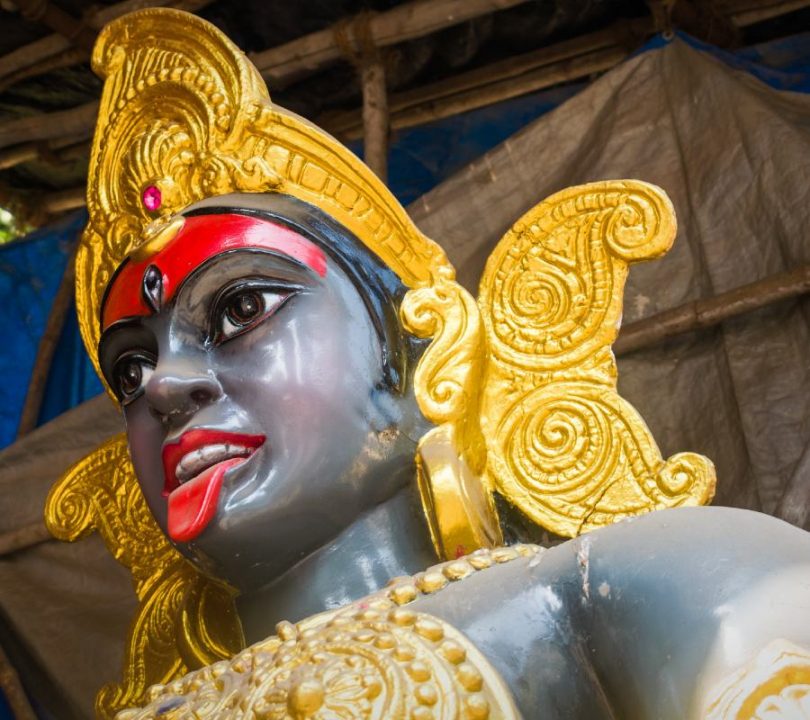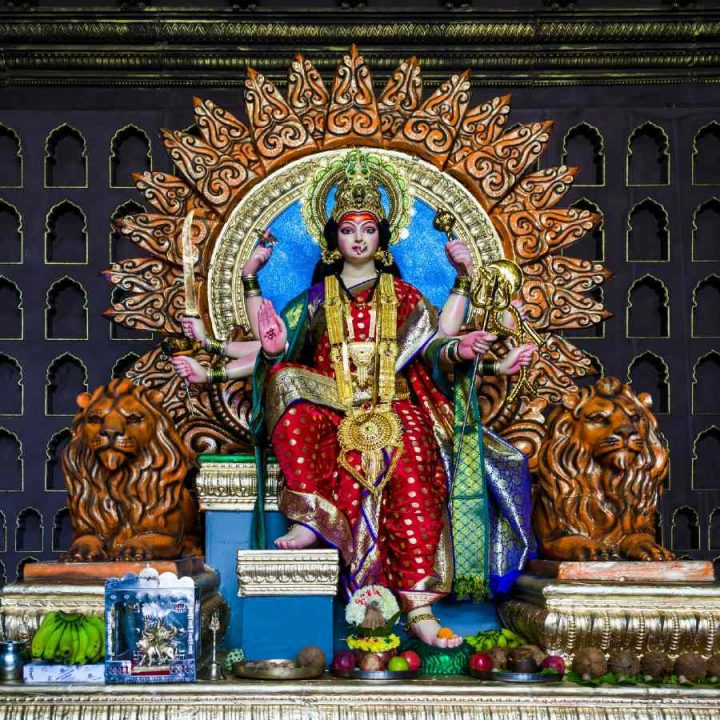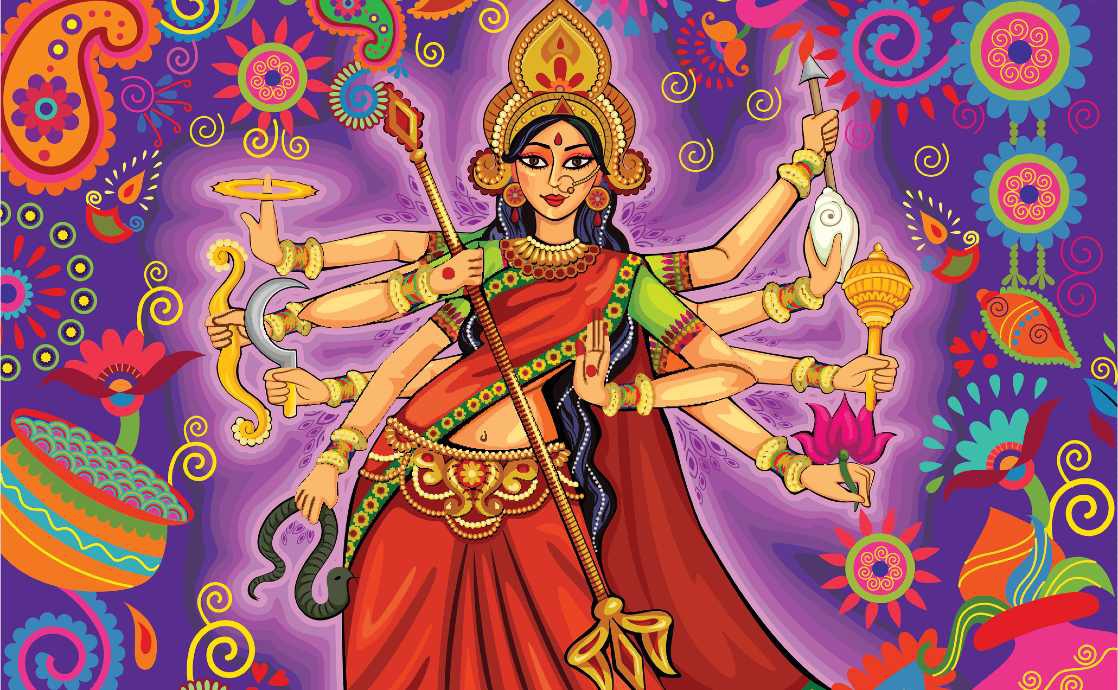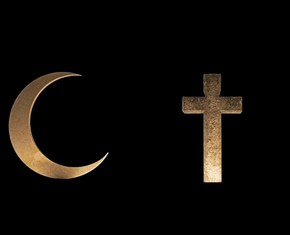The views expressed in our content reflect individual perspectives and do not represent the authoritative views of the Baha'i Faith.
When you enter a Hindu home, if the only Hindu art you see is of a female goddess, you are probably in the home of a Shakti.
The word Shakti means “enabling force,” and Shaktis understand creation, its embodiment and animating energy as feminine.
A helpful clarification from Hindu scholar V. R. Ramachandra Dikshitar is that to Shaktis, Brahman (God) is static Shakti (energy), and Shakti is dynamic Brahman. Long before feminism became a social movement in the West, feminism existed as a major force in India, attracting millions of women — and men. It’s not that Shaktis are at war with males; it’s simply that they believe the underlying force of mother nature is inherently feminine.
RELATED: The Maid of Heaven: A Symbol of the Divinity of Women
Just as all males are born of women, male energy requires female energy to come into being. Males, by the way, make spiritual progress in Shaktism by recognizing the latent female nurturing principle within them. In much the same way, the Baha’i teachings exalt that eternal female principle, citing the primary Baha’i principle of the absolute equality of the sexes, and saying that in the Baha’i Faith:
… women are accounted the same as men, and God hath created all humankind in His own image, and after His own likeness. That is, men and women alike are the revealers of His names and attributes, and from the spiritual viewpoint there is no difference between them. Whosoever draweth nearer to God, that one is the most favoured, whether man or woman ….
Abdu’l-Baha also said, in J.E. Esselmont’s book Baha’u’llah and the New Era, that:
The world in the past has been ruled by force, and man has dominated over woman by reason of his more forceful and aggressive qualities both of body and mind. But the balance is already shifting; force is losing its dominance, and mental alertness, intuition, and the spiritual qualities of love and service, in which woman is strong, are gaining ascendancy. Hence the new age will be an age less masculine and more permeated with the feminine ideals, or, to speak more exactly, will be an age in which the masculine and feminine elements of civilization will be more evenly balanced.
“I Am the Sovereign Queen”
Shaktism is quite old. Indeed, some of the most ancient art in India depicts female figures believed to be goddesses. The oldest Hindu scripture, the Rig Veda, speaks of a female god — Saraswati, a.k.a. Vak — in the highest terms. Hymn 125 in Book 10 reads:
I am the Sovereign Queen; the treasury of all treasures; the chief of all objects of worship; whose all-pervading Self manifests all gods and goddesses; whose birthplace is in the midst of the causal waters; who in breathing forth gives birth to all created worlds, and yet extends beyond them, so vast am I in greatness.
There is only one Goddess (or Devi in Sanskrit) in Shaktism, but she can take hundreds of different forms, largely dependent on the region of India. In the north and east of India the most common form of the Goddess is Kali, although Durga and Chandi are also common. In the south it is often Lalita-Tripurasundari.
Kali is the feminine version of the word kala, which has two meanings in Sanskrit: time (or a portion of time) and black, as darkness precedes light in time. Kali is fairly easy to spot and not easy to forget. She is a fearsome black (or blue) image often seen in the midst of battle, wielding a sword and holding in one of her arms the severed head of a demon. She also wears a garland of skulls and a belt of severed arms.

It’s easy for Westerners to misinterpret the meaning of this image. Kali is fierce because she is destroying evil. In two of her arms, she is telling her followers to fear not, she protects and blesses them, but woe betide her enemies. Kali is often seen standing on top of the body of Shiva. The story goes that Kali was so caught up in a battle that she began killing everything in sight. To calm and stop her, Shiva threw himself under her feet. At which point Kali stuck out her tongue in astonishment, and then was able to stop her rage. Kali is a consort of Shiva, and in Shakti belief, it is through her that he receives his power.
RELATED: How Yoga Began: The Many-Armed Dancing Shiva
Many modern Westerners first learned of Hinduism through the writings and practice of Ramakrishna (1836-1886) and his chief disciple, Swami Vivekananda (1863-1902). Both were devotees of Kali. At the Parliament of World Religions in Chicago in 1893, during the same conference when the Baha’i Faith first became known in the West, Vivekananda introduced the Hindu spirit of religious acceptance this way:
Holiness, purity and charity are not the exclusive possessions of any church in the world. Every system has produced men and women of the most exalted character. In the face of this evidence, if anybody dreams of the exclusive survival of their own religion and the destruction of the others, I pity them from the bottom of my heart, and point out to them that upon the banner of every religion will soon be written, in spite of resistance: ’Help and not Fight,’ ’Assimilation and not Destruction,’ ’Harmony and Peace, and not Dissension.’
Indeed, it cannot be otherwise, as Hindus see it, because they know that God is within every person and longs to be welcomed.
If you see a lighter skinned goddess riding a tiger or lion, perhaps in battle slaying a buffalo demon, then you have encountered Durga, another manifestation of the Devi. A similar looking goddess is Chandi. Chandi is dominant among Shaktis in regions around Bengal and is sometimes viewed as combining aspects of Kali, Saraswati (consort of Brahma), and Lakshmi, consort of Vishnu. She may also be regarded as the war-like aspect of Durga, although Durga can be peaceful too. Chandi is usually presented as having a golden hue and 18 arms. Like Durga she is often seen in battle holding many implements of war and riding a lion.

If you encounter a beautiful, young, female goddess radiating love, usually seated on a throne or a lotus flower, often dressed in red, and with a mandala composed of many triangles somewhere near her feet, you have encountered Lalita-Tripurasundari and are in the home of a Shakti. The word Lalita means “one who plays;” tri, of course, means “three;” pura means “city;” and sundari means “beautiful.” Thus, Lalita-Tripurasundari is the beautiful goddess who plays in three cities. The original meaning of the three cities is unknown, but “cities” is sometimes translated as “worlds” and is then understood to mean the whole universe: the physical, mental (perceptual), and divine causal; or heaven, earth, and that which connects them. The name of the Indian state of Tripura, surrounded by Bangladesh, may come from this goddess, who has many followers in the area.
Other signs of Lalita include her holding a tall green sugar cane reed in one hand, flowers in another, and other things in other hands. She may also have two female attendants each holding fans: Lakshmi (recall she is the consort of Vishnu and also the goddess of wealth and prosperity) and Sarswati (again, consort of Brahma, but also the goddess of arts, music, sciences and knowledge). Though there are battle stories that involve Lalita, her visual aspect is generally benign and welcoming — like a mother welcoming a child.
The mandala near the feet of Lalita is a sacred symbol called a Sri Chakra (Holy Wheel) or Sri Yantra (Holy Instrument). Its outermost dimension is square representing the energy of the earth, then inside the square is a circle (representing the energy of water) of lotus petals, then nine triangles drawn into each other, producing a total of forty-three triangles. A bindu (dot) in the center may be considered a 44th triangle. An upward facing triangle represents the element fire. A downward facing triangle represents water, knowledge, and female fecundity. The downward facing triangle is often used as a Shakti symbol.
One final common manifestation of the Devi is probably good to note: Pravati. Considered the second wife of Shiva, she is also considered a complete manifestation of Shakti, (the adi parashakti, eternally limitless power) the active energy that creates and dissolves the universe and who is the mother of all other gods and goddesses. Parvati is thus Shakti herself and Kali, Durga, Chandri, Lalita and others are among her possible manifestations.
Shaktis, like all Hindus, seek to recognize God (the Goddess) within, and they believe that the divine mother can incarnate in this world. Shakti spiritual practice often involves the use of specific mantras (sacred repeated sounds) and yantras (images, like the Sri Chakra) as well as yoga and various tantric practices. Their main scriptures include: the Vedas, Shakta Agamas, Devi Purana, Kalika Purana, Devi Bhagavata Purana, and Mahabhagavata Purana.
















Comments
Sign in or create an account
Continue with Googleor